According to the State of Michigan, the total number of COVID cases in Michigan rose to 57,731 on June 2, an increase of 199 cases from the previous day. The daily total was equivalent to 578 cases per 100,000 people (Chart 4). Of those 199 cases, 43 were documented in Southeastern Michigan, which was equal to 22 percent of the new cases. In Chart 1 we show that the State total for the number of COVID cases on May 31 was 57,233–a five-day rolling average. The five-day rolling average for the total number of COVID cases (Chart 1) reflects a smoother curve and adjusts for fluctuations in testing and/or the quality of reporting or failure to report.
Chart 2 shows that, based on the five-day rolling averages, the growth of new COVID cases in Southeastern Michigan has further flattened as new daily case numbers decline. On May 31 the number of cases in Detroit reached 11,007, the highest in the region, and Wayne County reported the second highest number of cases at 9,335. On May 31, the five-day rolling average for the number of COVID cases in Oakland County was 8,369, and Macomb County reported 6,672.
The City of Detroit had 1,645 COVID cases per 100,000 people as of June 2, a small increase from 1,644 the day before (Chart 3). This is based upon a reported increase of 17 new COVID cases, bringing the total number of COVID cases in Detroit to 11,068. Wayne County reported 873 cases per 100,000 people, and Oakland County had 669 cases per 100,000 people, the same as the day before. These per capita rates were based upon 9,400 total cases for Wayne and for 8,412 Oakland. Macomb County reported 769 cases per 100,000 people, which is based upon 6,720 cases.
The daily data highlighted in these posts is from Michigan.gov/coronavirus, where data is updated daily at 3 p.m. Historical data were supplied from covidtracking.com, which republishes COVID data from the State. Additionally, the case totals do not reflect the number of people who have recovered, just those who have been infected.
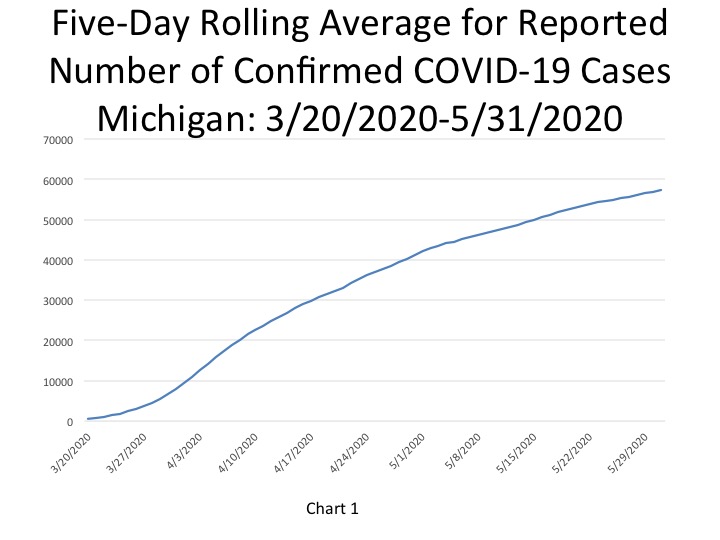
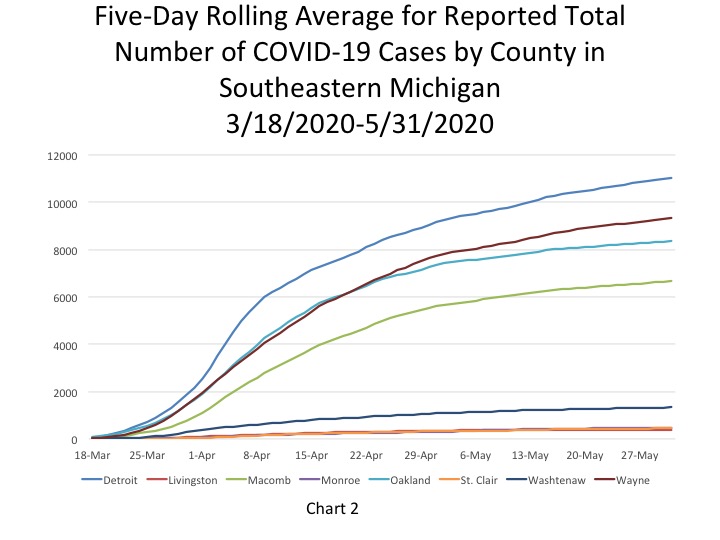
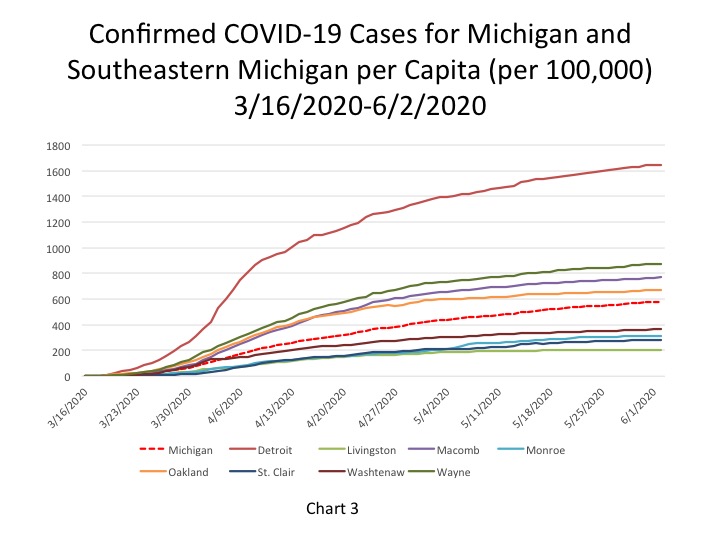
Chart 4 shows that Wayne County, among the units covered here, again reported the highest number of daily cases. On May 31 49 new cases were reported in Wayne County, a decrease from the day prior, and Detroit reported 33 new cases, also a decrease from the day prior. The numbers reported in this chart reflect a five-day rolling average.
On June 2, the per capita rate for the number of new daily COVID cases per 100,000 people was 2 for the State, which was equivalent to 199 new cases, increases from June 1. The State had a higher per capita rate compared to Detroit and all counties in Southeastern Michigan. Detroit, Macomb, Washtenaw and Wayne counties all reported a per capita rate of 1 per 100,000 people for the number of new COVID cases and the other counties in the region reported rates of 0. Detroit’s per capita rate of 1 was equal to 10 new COVID cases while Macomb County’s was equal to 13 new cases, Wayne County’s was equal to 12 new cases and Oakland County’s per capita rate of 0 was reflective of 0 new reported cases. Overall, 43 new COVID cases were reported in Southeastern Michigan on June 2. This is a decline from the day prior.
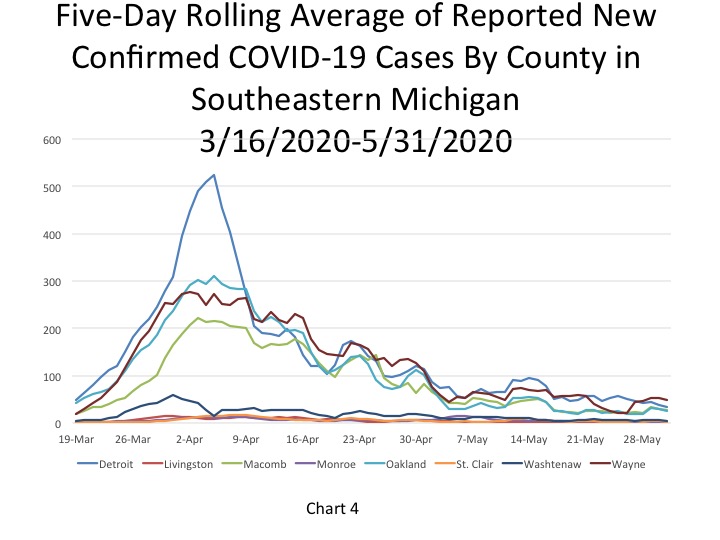
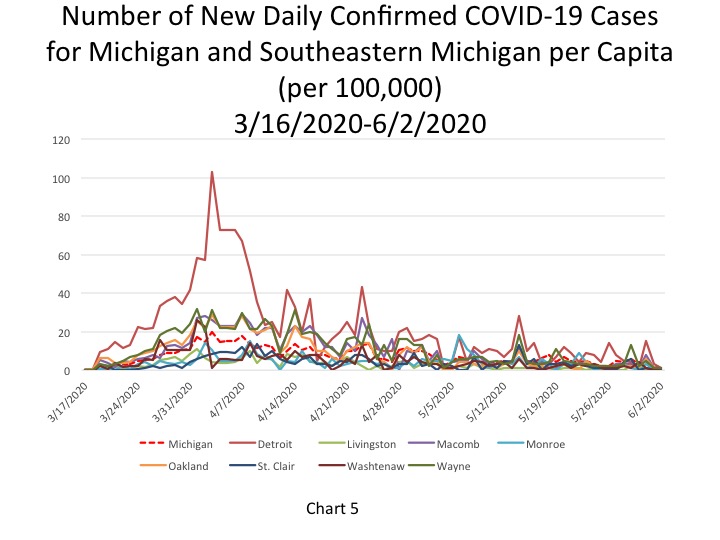
In Chart 6, the five-day rolling average for the number of deaths in Michigan shows a continuing slow increase (a lagged number of 5,482 deaths, an increase of 32 deaths). The actual reported COVID-19 deaths on June 2 was 5,533, an increase of 37 deaths from the day prior, 11 of which were tacked onto the daily total as a result of comparing death certificates with the COVID database. Furthermore, of those 37 deaths Southeastern Michigan accounted for 25 of them. The number of new deaths in Southeastern Michigan nearly doubled from the day prior but continue to remain much lower than even a few weeks ago.
Chart 7 (a 5-day rolling average) portrays how Detroit continues to report the highest cumulative number of deaths at 1,371 on May 31. Wayne County had the second highest total at 1,084 on May 31.
The per capita rate for the total number of COVID deaths increased by one for Detroit and Wayne, Oakland and Macomb counties. The rate for the other counties remained the same as the day prior. In Detroit the per capita rate increased to 205 (representing 1,380 deaths). In Wayne County there were 102 COVID deaths per 100,000 people (1,095 total deaths). In Oakland County there were 79 deaths per 100,000 people (999 total deaths), and in Macomb County there were 94 COVID deaths per 100,000 people (818 total). Wayne County had the highest single day death count in Southeastern Michigan on June 2; 7 COVID deaths were reported. The State of Michigan had 55 COVID deaths per 100,000 people, which was equal to 5,533 total deaths. The State’s per capita rate did not increase as the total number of new deaths only increased by 37.
Chart 9, the five day rolling average of deaths, shows the number of new statewide deaths declined again, this time to 32 on May 31. Furthermore, Chart 10 shows how the number of deaths in Southeastern Michigan remained stagnant, except for Wayne County. Wayne County reported 7 new deaths on May 31, the highest in the region, and Detroit reported 6 new deaths. These numbers are based on five-day rolling averages.
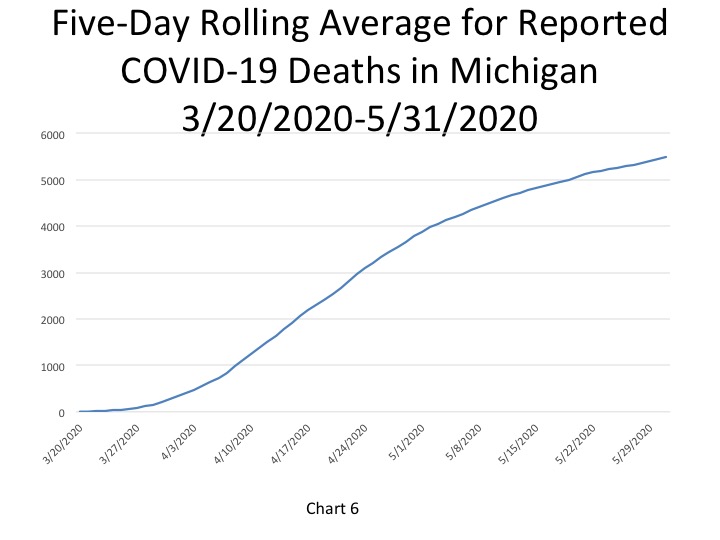

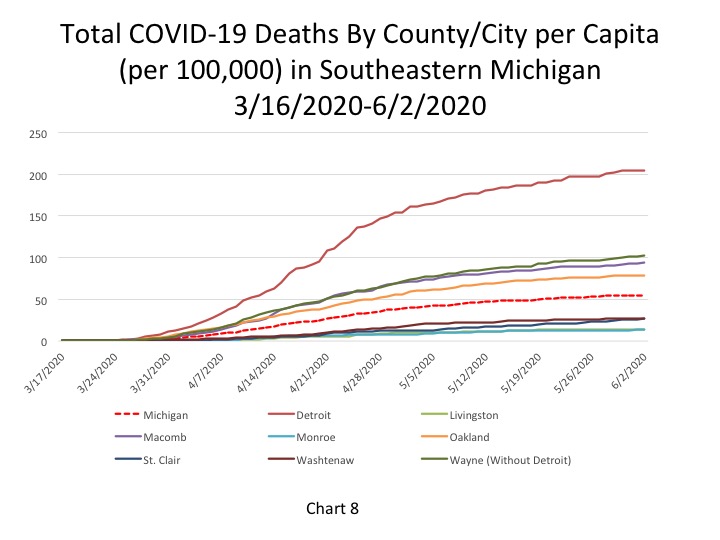
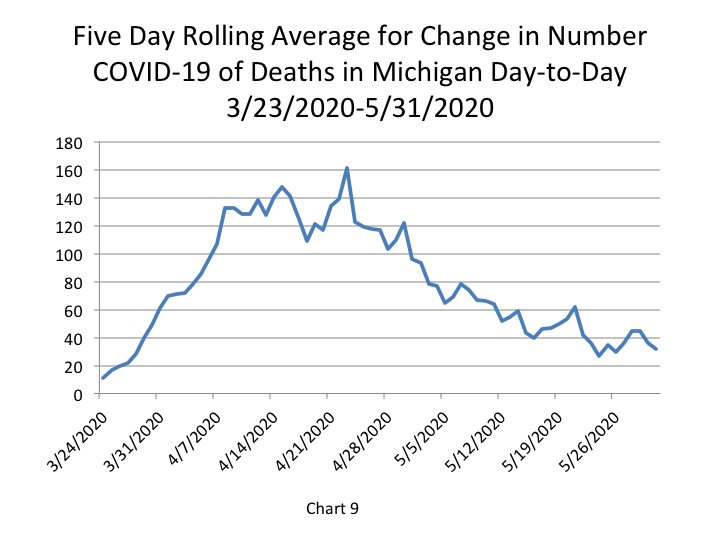
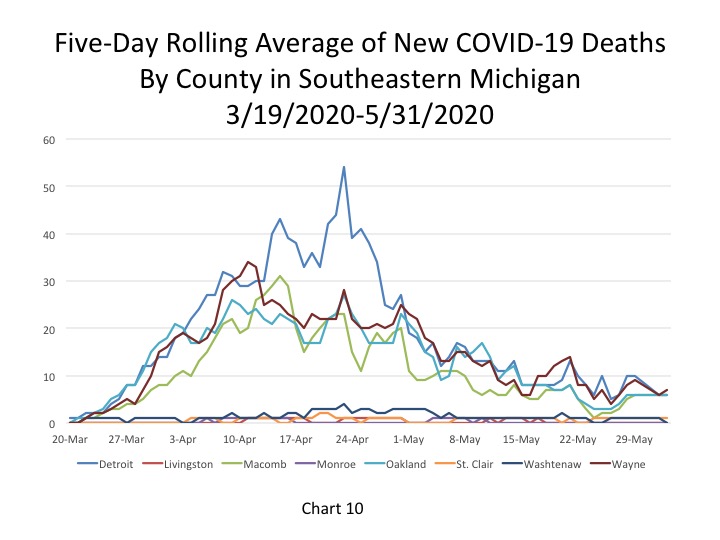
While Michigan maintained a fatality rate of 9.6 percent for the 15th day in row, Detroit’s rose to 12.5 percent and Macomb County’s rose to 12.2 percent (the highest it has been) on June 2.
One reason we may be seeing such high fatality rates in Michigan is due to the low testing rates. When only having-presumably-a lower of number confirmed COVID cases than is actually likely due to the limited availability of tests, the fatality rate appears higher because the base comparison is smaller than it might be.
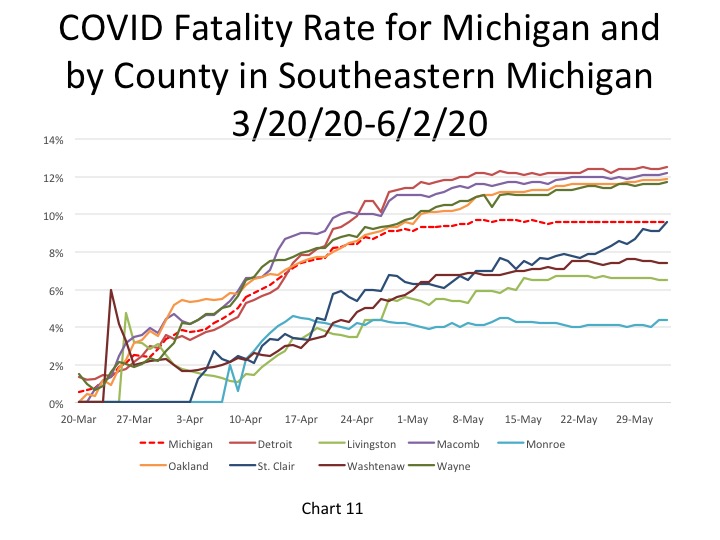
The data reported on June 2 shows that numbers continue to remain stagnant and/or decline. However, with the incubation time of the virus being up to 14 days we have yet to see if and what impact the holiday weekend had on the spread of the virus.